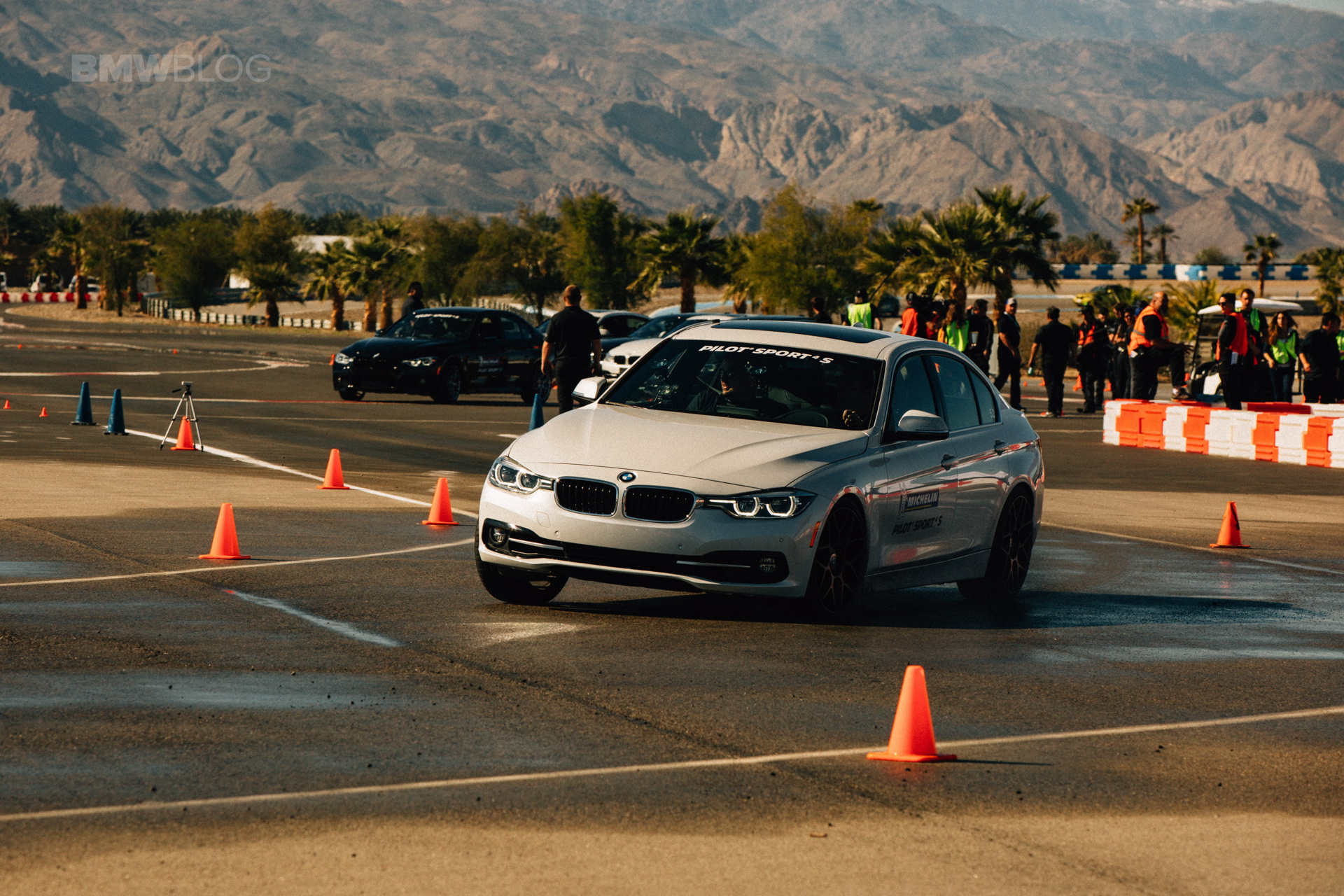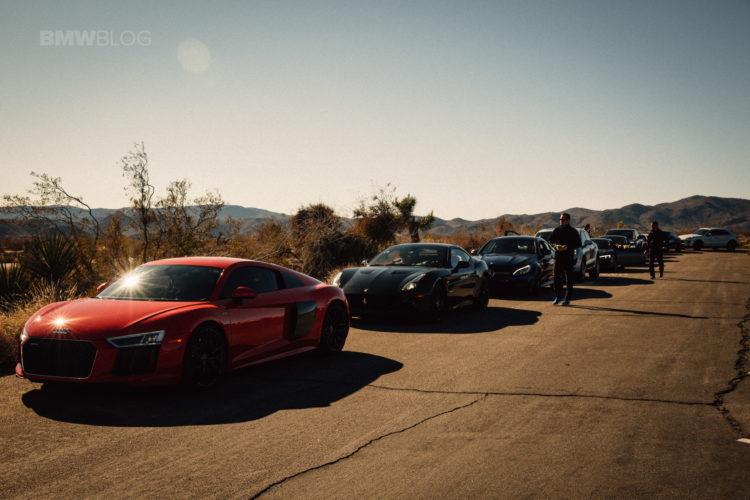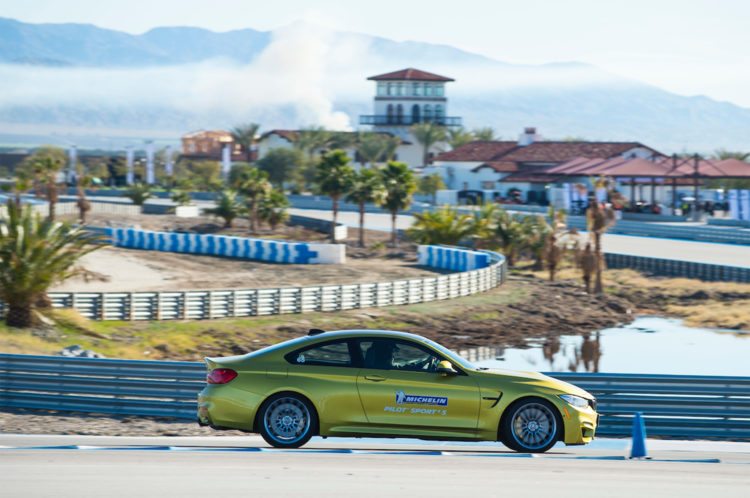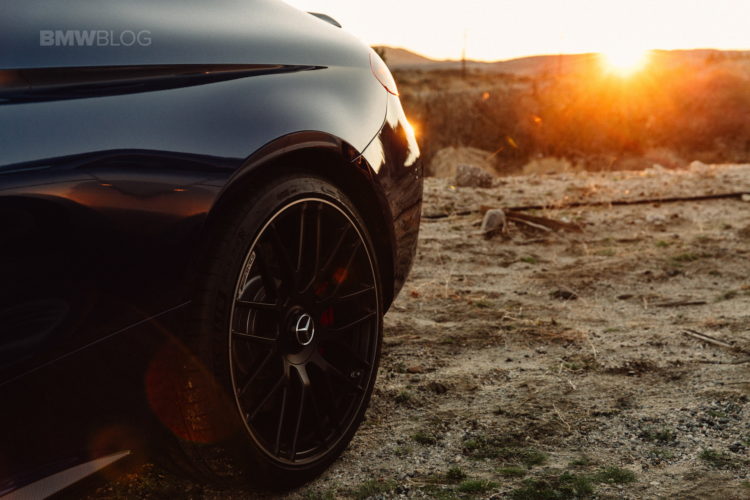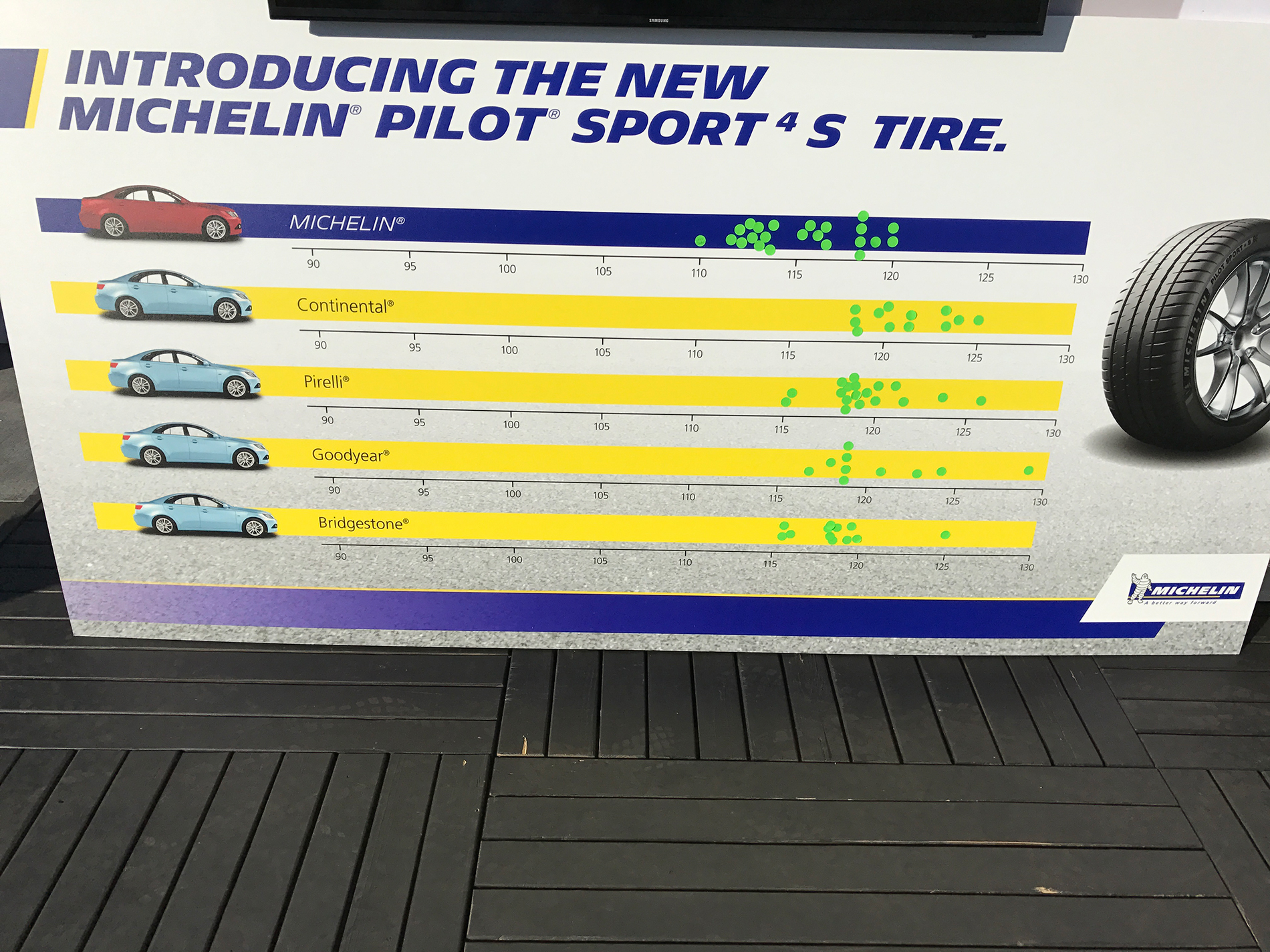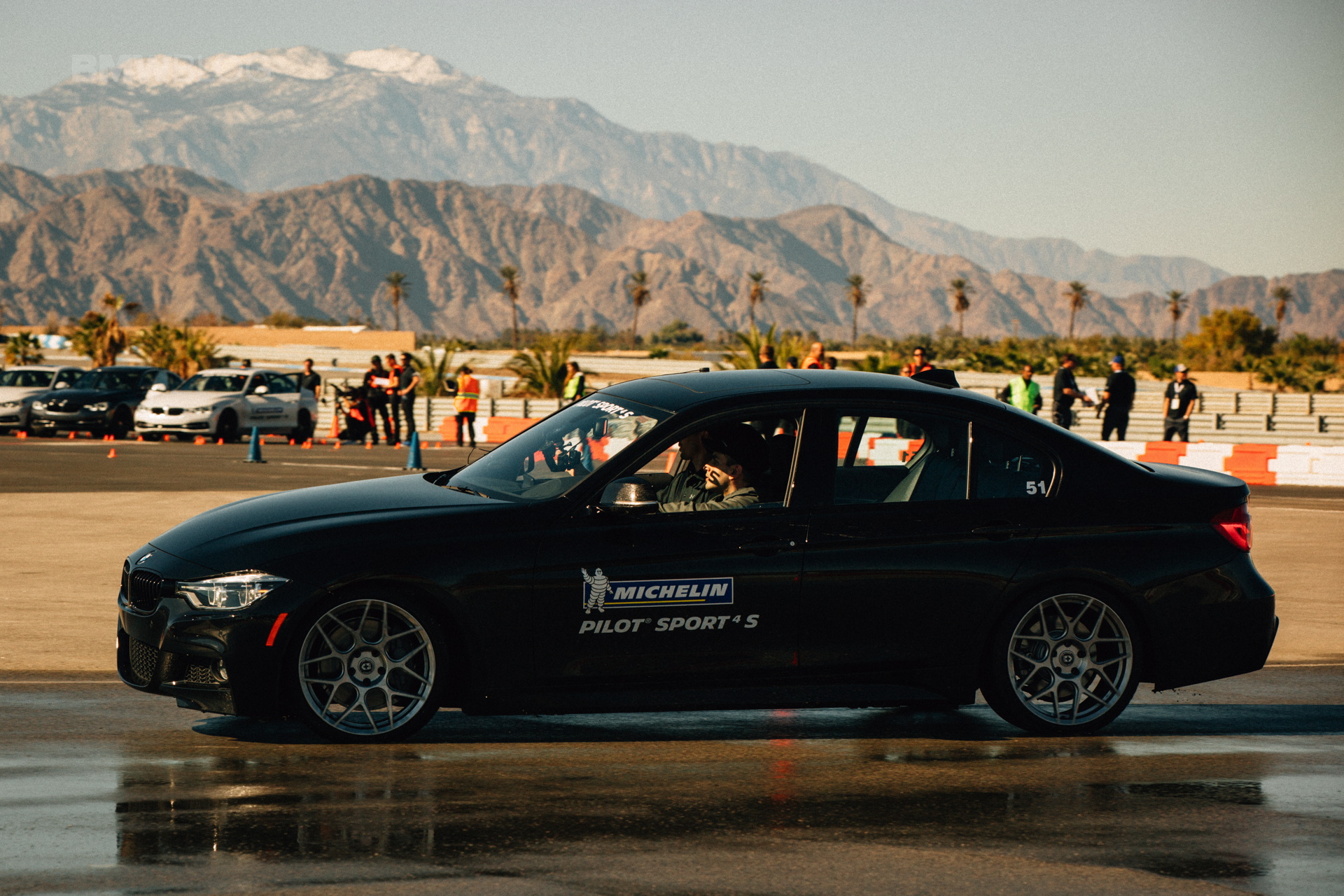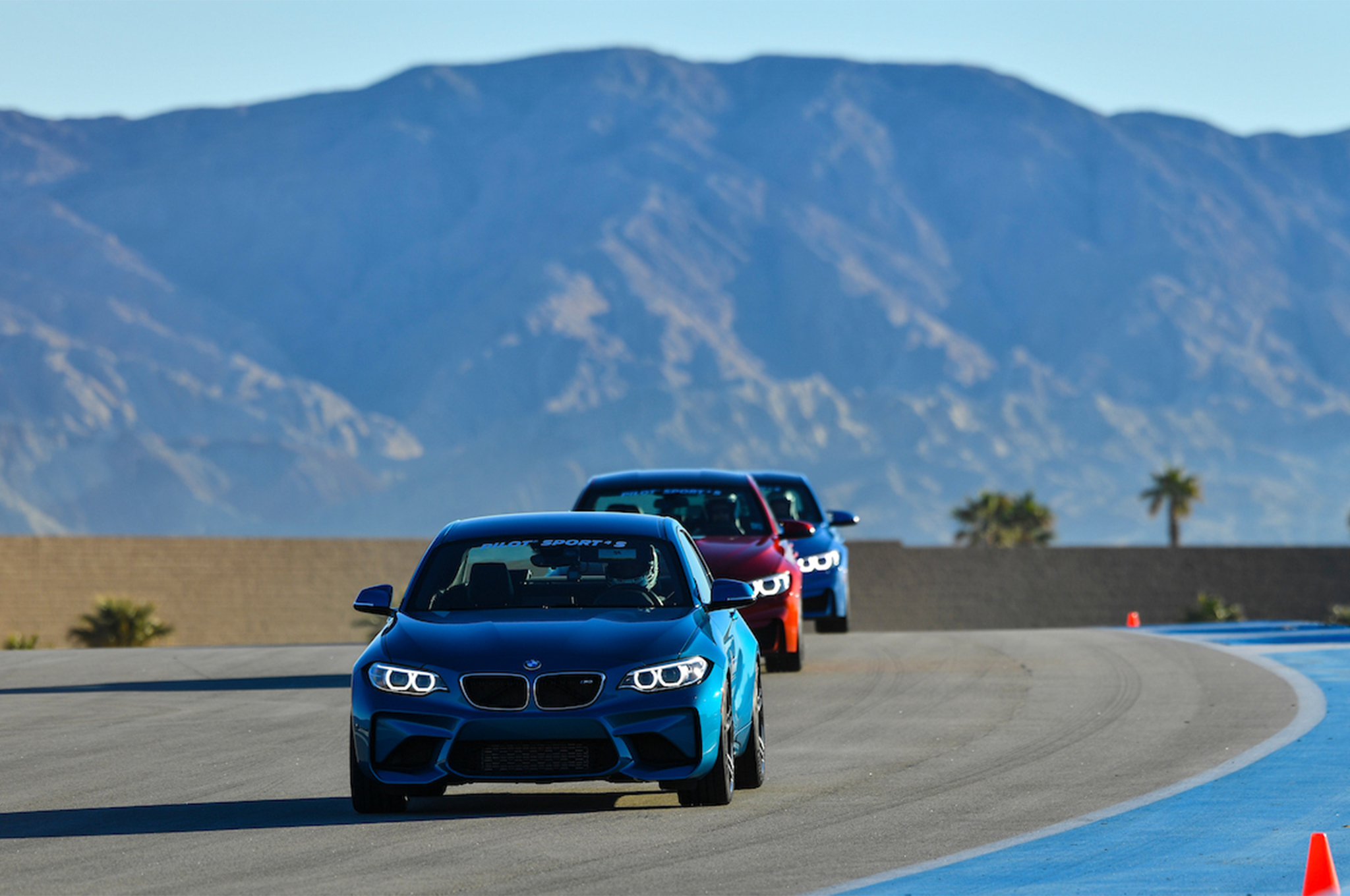In the automotive industry, the Michelin Pilot Super Sport tire was widely regarded as the best summer tire on the market. Almost every high-performance automotive brand would put the Pilot Super Sport on its highest-performing cars or at least have it as an option. And any enthusiast serious about lap times would do the same. However, Michelin wasn’t content on leaving it there. So the famous French tire brand went out and developed a new tire, the Michelin Pilot Sport 4 S.
We recently had the opportunity to go out to California to give the new Pilot 4 S tires a test on a variety of different cars, including the BMW M3/M4, Audi R8 V10, Ferrari California and Mercedes-AMG GT.
Carl Driver, Michelin senior product development engineer said the company had some pretty demanding requests from its engineers. The idea was to take an already great performance tire and improve upon it, an engineering challenge that pushes the limit of physics and materials. “They wanted better dry/wet braking, lap times, and rolling resistance,” Driver said during a workshop. For Michelin, rolling resistance is particularly important due to European demands for tire technology. Driver said that improvements have been made in all areas, with the only constant being the 300 tread-wear rating.
Dry braking from 62 mph to 0 has been cut by 3.54 feet compared to the Pilot Super SPort for a total distance of 110.43 ft. On Michelin’s 1.6-mile test track, the PS4S also dropped 0.16 seconds from the PSS’s time. 
Michelin has put forward incremental upgrades in many areas, for example materials and tire design. Michelin carefully blended softer and harder compounds within the new tire’s construction to cover a range of driving conditions. Some design features come from the Pilot Sport Cup 2, like the tread pattern.
It’s an extremely impressive tire and it’s interesting to see all of the work Michelin put in to improve an already incredible tire. Michelin actually employed a bi-compound technique, where the tire is made up of two separate rubber compounds. This allows the inside half of the tire to be better for wet traction and the outside half better for dry traction.
The idea is that, during wet driving, there isn’t going to be a lot of high lateral g-force on the outside of the tire, so the inside half should be better in the wet. And the exact opposite for dry traction, where there will be a lot of high g-forces applied to the outside and sidewall of the tire, so make it better in the dry. To better perform in wet conditions, Michelin applied a multi-tread compound construction with two elastomers and increased the silica on the tire’s inside shoulder.

Along with two separate compounds, there are also two very different tread blocks, inside to out. On the inside half of the tire, where it’s better in the wet, there are smaller tread blocks with more channels through them. This allows for more water dispersion and better grip in the wet. Along the outside, you can see that the tread blocks are much larger, with fewer rain channels, so that it gets better traction during high g-force turns on dry pavement. The more rubber hitting the road is better for dry traction, which is why you see racing slicks with no tread on F1 cars. So the larger tread blocks on the outside will provide better dry performance.
Michelin also worked on dispersing heat and pressure throughout the entire contact patch of the tire, as the only real downside of the previous Pilot Super Sport was that it got a bit hot in certain areas. The better dispersion of heat, the better the tire will grip. Michelin has improved this on the new Pilot Sport 4 S and it shows across the board.

We tested it against all of its major competitors through an autocross circuit, including the new Continental ContiSport, Goodyear Eagle F1, Bridgestone Potenza Pole Position and Pirelli P Zero. In all tests, the test car was a BMW 340i. Since testing can be often subjective, Michelin also used an independent testing agent to pit the Pilot Sport 4 S against every key rival in dry braking, wet braking, and dry handling. In all these areas, the new PS4S came out on top.
In dry braking, wet braking and dry lap times, the Michelin came out on top.
Michelin’s toughest competitors in the segment are the Pirelli P Zero and Goodyear Eagle F1. The P Zero is often regarded for its traction on a damp track and steering feedback, features that were quickly matched by the Michelin’s PS4S. Under full load through the autocross course, the PS4S felt more stable and planted on the asphalt, while the P Zero loses some of its traction under full load. When it came to the Eagle F1, the tire was stable in wet conditions, just like the PS4S, but on the dry surface, it lost its edge to the Michelin’s PS4S with its enormous lateral grip.
Overall, it’s an extremely impressive tire, besting its competition in every single category, including durability and longevity. To improve on what was already such an excellent tire is difficult but Michelin has been able to do it and then some. If you’re looking for a new tire for your performance car, look no further than the Michelin Pilot Sport 4 S.
Michelin will be launching the PS4S in March in the U.S. with 35 sizes, more will follow in the upcoming months.


